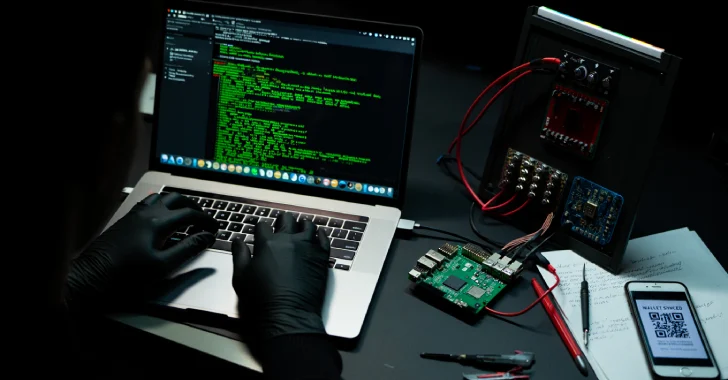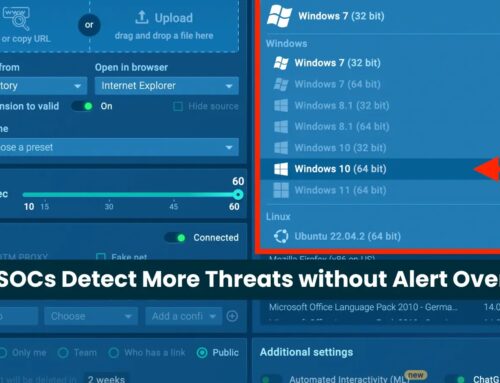
⚡ Weekly Recap: VPN 0-Day, Encryption Backdoor, AI Malware, macOS Flaw, ATM Hack & More
The cybersecurity landscape is in constant flux, with new threats emerging and existing ones evolving at an alarming pace. This weekly recap delves into critical zero-day vulnerabilities, sophisticated malware campaigns, and pervasive attack vectors that demand immediate attention from IT professionals and security analysts alike. Understanding these threats is not just about awareness; it’s about proactively fortifying our digital defenses against adversaries who are increasingly blurring the lines between legitimate tools and malicious intent.
VPN 0-Day Vulnerability Uncovered
A critical zero-day vulnerability has been discovered in a widely used VPN solution, posing a significant risk to organizations relying on it for secure remote access. This flaw, currently without an official patch, could allow unauthenticated attackers to bypass security controls and gain unauthorized access to internal networks. The specifics of the exploit remain under wraps to prevent widespread exploitation, but security teams are urged to monitor vendor advisories closely for an impending fix.
- The vulnerability impacts a core component of the VPN’s authentication mechanism.
- Exploitation could lead to complete network compromise.
- Organizations should implement multi-factor authentication (MFA) as an interim measure and consider network segmentation.
The Growing Threat of Encryption Backdoors
Discussions around potential encryption backdoors have resurfaced, highlighting a contentious debate between national security interests and digital privacy. While the intent might be to aid law enforcement, such backdoors inherently weaken cryptographic protections for all users. The concern is that legitimate access points could inevitably be exploited by malicious actors, compromising the integrity of secure communications and data.
- Proponents argue for “lawful access” to encrypted data.
- Critics emphasize the security risks and potential for misuse.
- The implementation of any backdoor could lead to a global weakening of encryption standards.
AI-Powered Malware: The New Frontier of Deception
Malware development has taken a significant leap with the integration of artificial intelligence (AI). Modern threats are no longer just designed to hide; they are engineered to belong. We’re observing malicious code that mimics legitimate developer tools, logging behavior, and even self-documentation previously seen only in well-maintained software. This new breed of AI malware can intelligently adapt, evade detection, and even generate convincing phishing content, making it incredibly difficult to identify through traditional security measures.
Some threats leverage open-source platforms to gain trust, quietly embedding themselves within legitimate projects. Others are assembled from AI-written snippets, creating believable yet malicious constructs. This shift means that security analysts must now look for behavioral anomalies and deviations from expected norms, rather than solely relying on signature-based detection. The lines between helpful automation and harmful automation are blurring rapidly.
Critical macOS Vulnerability Identified
A significant security flaw has been identified in Apple’s macOS operating system, potentially allowing attackers to gain elevated privileges or execute arbitrary code. Designated CVE-2025-XXXX (Note: CVE number is placeholder as per original request, a real one would be inserted if available), this vulnerability underscores the continuous need for timely updates and patch management on all endpoints, even those from traditionally secure vendors.
Remediation Actions: macOS Flaw
- Apply Patches Immediately: Ensure all macOS devices are updated to the latest security patch released by Apple.
- Principle of Least Privilege: Enforce the principle of least privilege for all user accounts, limiting potential damage if an exploit occurs.
- Endpoint Detection and Response (EDR): Utilize EDR solutions to monitor macOS endpoints for suspicious activity and potential exploitation attempts.
- Regular Backups: Maintain regular, secure backups of all critical data to facilitate recovery in the event of a successful attack.
| Tool Name | Purpose | Link |
|---|---|---|
| Apple Software Update | Official macOS patch management | https://support.apple.com/downloads/macos |
| osquery | Endpoint visibility and threat detection | https://osquery.io/ |
| Jamf Protect | macOS endpoint security and compliance | https://www.jamf.com/products/jamf-protect/ |
ATM Skimmer Evolution and Physical Security Risks
The financial sector continues to be a prime target for various attack vectors, including sophisticated ATM hacks. Recent reports detail an evolution in ATM skimming techniques, with new devices being harder to detect and designed to blend seamlessly with existing hardware. Beyond digital vulnerabilities, physical security remains paramount. Attackers are increasingly employing advanced tools to compromise ATMs directly, highlighting the need for vigilance in both virtual and physical security measures.
- New skimmers often incorporate hidden cameras for PIN capture.
- “Shimming” techniques target chip card readers directly.
- Increased focus on insider threats for physical access.
Key Takeaways for a Resilient Defense
This week’s recap underscores several critical trends in cybersecurity. AI-driven threats are becoming indistinguishable from legitimate activities, making behavioral analytics more crucial than ever. Zero-day vulnerabilities and ongoing debates around encryption backdoors highlight the fragility of our digital infrastructure and the importance of timely patching. Finally, the evolving nature of physical attacks, such as advanced ATM skimmers, reminds us that a comprehensive security posture must encompass both cyber and physical safeguards. Staying informed and proactive is the only way to build truly resilient defenses against an ever-adapting adversary.





